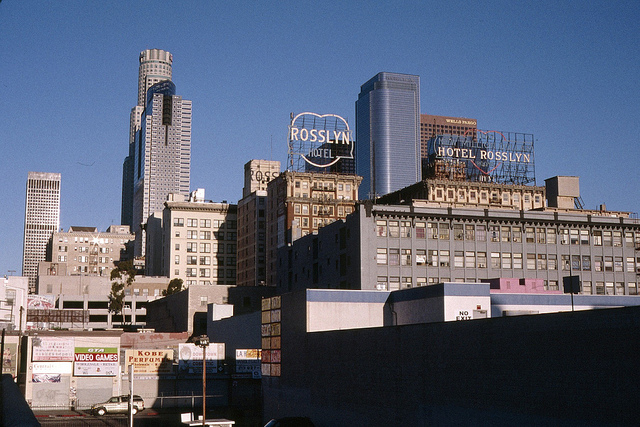I recently ate dinner with friends in Pacific Palisades, a tony Los Angeles neighborhood that was my hometown for 25 years, and where my children grew up.
“Are you still working with those kids?” inquired one of the dinner guests.
“No,” I responded. “L.A. Youth closed the door in February 2013 on our 25th anniversary. The recession hit us hard. We couldn’t afford to continue training hundreds of young people every year and publish the teen-written newspaper as our budget was shrinking. I’m still in touch with the teens and we have a reunion in the summer.”
“We’re all in transition, spending more time with the grandkids, enjoying cruises, and when I’m home I volunteer at a shelter in Santa Monica,” my friend shared. “We’re talking about dropping by a rally for LAUSD teachers. It reminds us of the 1960’s and ’70s marches. I probably have to carry a portable chair for when my legs get tired,” she laughingly added.
“I’ll go with you, we can stop at Langer’s for corned beef sandwiches.” I enthusiastically responded.
“Oh, no, that’s not healthy, we’re only organic these days.”
The evening was filled with strange questions coming from people who led student walk-outs at Berkeley and broke bread with Huey Newton. They alluded that teens today are said to be more violent and wondered if I was afraid to attend meetings in South Los Angeles. A former neighbor sits in his gated hilltop home listening to Rush Limbaugh and Fox News all day. In 1972 he hosted brunches for a progressive school board candidate.
Princeton University Professor John DiIulio defines current teenagers as super-predators — kids who have no respect for human life, with no sense of the future. I found myself defending the generation under scrutiny, and I decided to share with my dinner partners a story about one of L.A. Youth’s young writers.
Young people today can go from home to college, back home, and to their first apartment. However, my friend Roshawn does not have a place to lay her head. I met her 12 years ago, a young girl who wandered into our journalism training program at L.A. Youth. She wanted to share her story. What she told us broke our hearts.
Her heroin-addicted mother wound up with her children on Skid Row. Four people squeezed into a single-room-occupancy hotel — no kitchen, and a bathroom down the hall with the luxury of sharing it with any kind of transient. They endured for four years.
Roshawn managed to make the trip from Skid Row to Reseda High School, until the bus strike of fall 2003. She was out of school for six weeks and fell so far behind with her schoolwork that she was forced to drop out.
No one called from the Los Angeles Unified School District. No one provided assistance from L.A. County Department of Children and Family Services. No one investigated from any agency.
For a short time an older sister’s couch in Inglewood provided respite from the drugs, violence, and overall madness of Skid Row. Roshawn completed classes to qualify for her G.E.D. and she began taking classes at Los Angeles Trade Tech College to pursue a career in early childhood development.
Unfortunately, this was not to be. The crowding and myriad of responsibilities at the house where she was staying ultimately sent her into a shelter, where she was permitted to sleep for the next 30 days. I wondered if a downtown developer would offer her shelter. With no permanent address how would she secure employment?
I haven’t seen Roshawn for several years. She had a baby in March of 2007. Her daughter lived with a foster family for some time. How many more generations of her family will endure these hardships?
High-rises, lofts, and businesses are all within proximity to Skid Row. The people who live and work in these places step over and around the hundreds of homeless people sleeping in doorways and under plastic tarps. The neighborhood park is off-limits for children as dozens of mentally ill and homeless adults sleep on benches and clutch their belongings stored in shopping carts. Children and teens have few safe places to gather outside of their hotel rooms.
Shelters, over-crowded rooms, and Skid Rows are crises that don’t tally in our minds because we’ve heard them so often. But, my friend Roshawn is a living, breathing, striving victim of these disasters.
¤
There was silence at the dinner table, as my story came to an end. Chairs awkwardly scraped against the hard floor as guests squirmed, preparing to leave. I thanked the host and opened the front door to quietly exit. As the door closed behind me, the dinner host turned off her porch light. Clearly, she was displeased with my contribution to the conversation. In the black of night I carefully migrated down the hillside steps toward my car. I didn’t stay for dessert.


